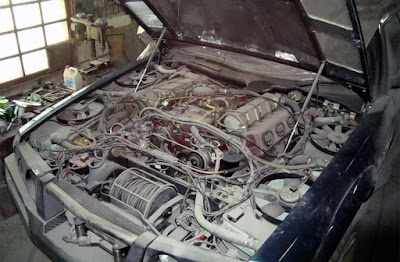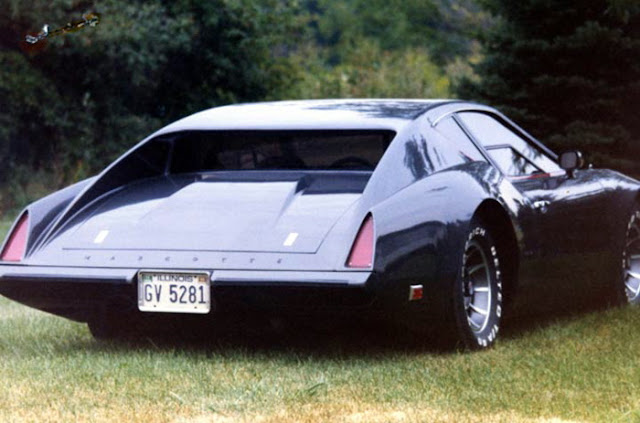Dragon Uran, the mother of all SUV's
Russian car designer Gennadi Hainov became famous in the 1980s for his "Laura" concept car and founded a car workshop called Dragon Motors, with his colleague Dmitri Parfenov, after the collapse of the Soviet Union. Dragon Motors was known for manufacturing hand-built SUVs based on the UAZ-469, an off-road light utility vehicle used by the Soviet era military.
While hunting for UAZ carcasses, the story goes, Hainov came across a 16-litre diesel engine from a BMP-1 assault tank, which came cheap due to a broken engine block. This engine served as inspiration for the development of the "mother of all SUVs". Hainov wanted to build a luxury off-roader around the huge 120-degree V6 engine that would really represent Dragon Motors. While the massive engine only produced 330bhp and weighed over 1400 lbs., it delivered prodigious torque of more than 740 lb.-ft.
The project is said to have started in the mid-1990s and was made possible by financial support from a Moscow businessman. The gigantic motor naturally required a huge and robust chassis around it. To that end parts were sourced from various trucks and military vehicles. The 5-spd transmission came from a ZiL-131 truck, the axle system and differential from a BTR-60 crew carrier, an air suspension from a LiAZ bus, and 20-inch wheels are from a ZiL street sweeper.
The motor itself was fueled by two 120 liter fuel tanks. Due to the winch mounted on the front of the car, the radiators had to be installed on the sides of the engine, which is why there were large grilles on the front fenders for ventilation.
 |
| The Uran's 16 Liter V6, and the vehicle donor. |
The Dragon Uran's styling has drawn comparisons with the Lamborghini LM002 and Hummer H1, bit manages to be distinctive nonetheless. The SUV has an imposing presence, with its sheer size, but isn't cumbersome or clumsy looking. It has the appearance of an enormous station wagon on steroids, atop impossibly large off-road tires, but is still somehow cohesive and functional. It is certainly in keeping with the clean lines found in Hainov's prior work.
The car's four-seat interior is dominated by a huge central tunnel. Inside, luxurious appointments include leather upholstery as well as a wooden dashboard and trim. The seats come from an S-class Mercedes, from which its electric sunroof mechanism was also borrowed. The Uran has no shortage of space for a larger driver and passengers. The interior was built to the specifications of Wujek Jura, an ergonomics expert who happened to be over 6ft tall.
 |
| The Uran, in profile |
The Uran ended up taking nearly a decade to finish and, by the time it was completed, its patron no longer wanted it. The customer had become a well known political figure. So, for the next 10 years, Uran sat in the corner of Hainov's workshop, waiting for better days.
After ending his political career in 2015, the project financier finally agreed to take delivery of the Uran. However, the road licensing regulations had become much stricter in the early years of post-Soviet Russia. So, this Frankenstein monster of an SUV could no longer be registered for the road. It still sits idle, somewhere on the outskirts of Moscow.
After ending his political career in 2015, the project financier finally agreed to take delivery of the Uran. However, the road licensing regulations had become much stricter in the early years of post-Soviet Russia. So, this Frankenstein monster of an SUV could no longer be registered for the road. It still sits idle, somewhere on the outskirts of Moscow.
The Dragon Uran would ultimately be among the last vehicles built by Gennadi Hainov. He passed away at the age of 59 in Autumn of 2019.
Sources:
Technical Mail (Finland)













One of those "just because you can, doesnt mean you should" moments.
ReplyDelete